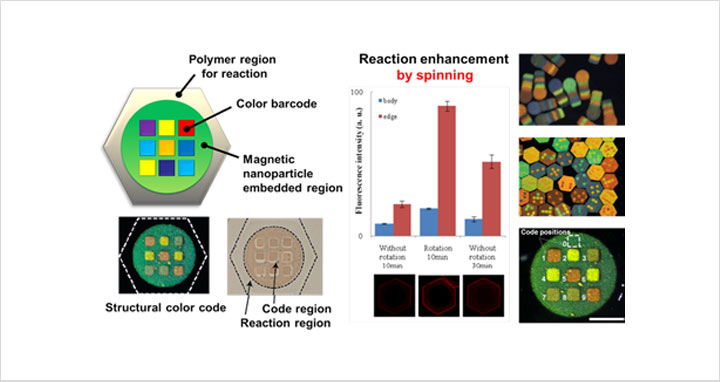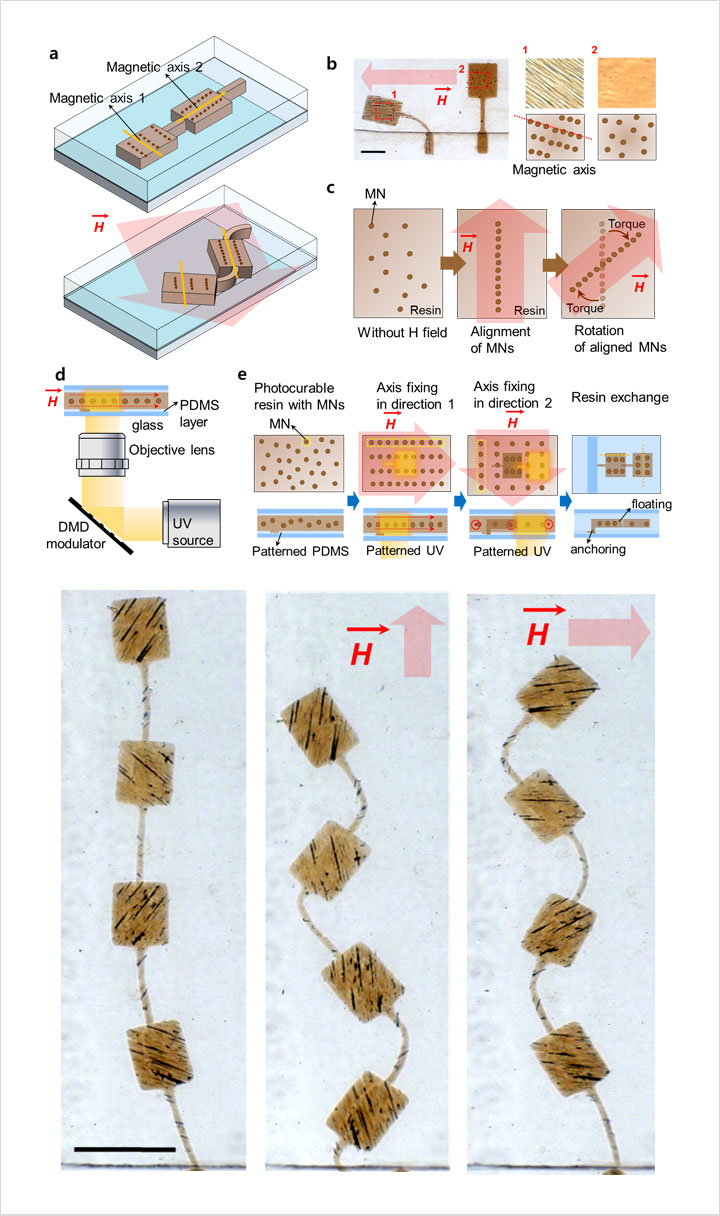mainmenu
Research
Prof.Sunghoon Kwon (closed)
Synthesis and application of nanocrystals
1Color barcoded particle
Here we create vivid, free-floating structural coloured particles with multi-axis rotational control using a colour-tunable magnetic material and a new printing method. Our colour-barcoded magnetic microparticles offer a coding capacity easily into the billions with distinct magnetic handling capabilities including active positioning for code readouts and active stirring for improved reaction kinetics in microscale environments5. A DNA hybridization assay is done using the colour-barcoded magnetic microparticles to demonstrate multiplexing capabilities.

2Partipetting
Partipetting is defined as a single pipetting operation of simultaneously self-assembling million different liquid drug-laden microparticles into million separate reaction wells in a microfabricated well plate, implying ‘Pipetting encoded Particles’. First, a liquid chemical compound is either encapsulated by an encoded polymer shell or absorbed in a lithographically formed encoded hydrogel microparticle forming encoded drug-laden microparticles. Millions of different chemical library are then processed same way but with different code to form a library or a stock solution of millions of different encoded drug-laden microparticles. Using only one pipetting event, millions of the drug-laden microparticles are self-assembled to a microfabricated well plate with million separate wells to form a chemical chip with million variations.

3Magnetic actuator

Polymeric microcomponents are widely used in microelectromechanical systems (MEMS) and lab-on-a-chip devices, but they suffer from the lack of complex motion, effective addressability and precise shape control. To address these needs, we fabricated polymeric nanocomposite microactuators driven by programmable heterogeneous magnetic anisotropy. Spatially modulated photopatterning was applied in a shape independent manner to microactuator components by successive confinement of self-assembled magnetic nanoparticles in a fixed polymer matrix. By freely programming the rotational axis of each component, we demonstrate that the polymeric microactuators can undergo predesigned, complex two- and three-dimensional motion.


